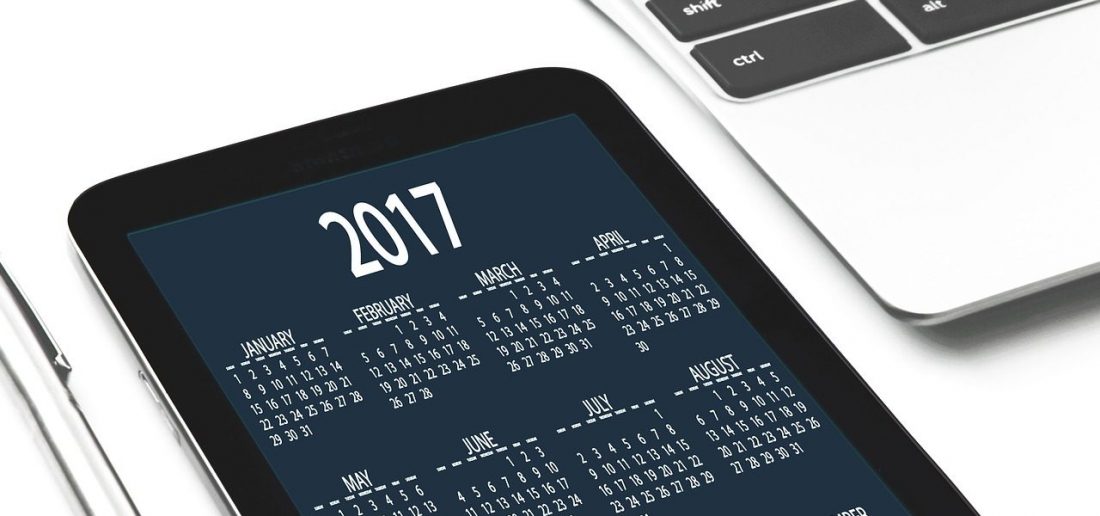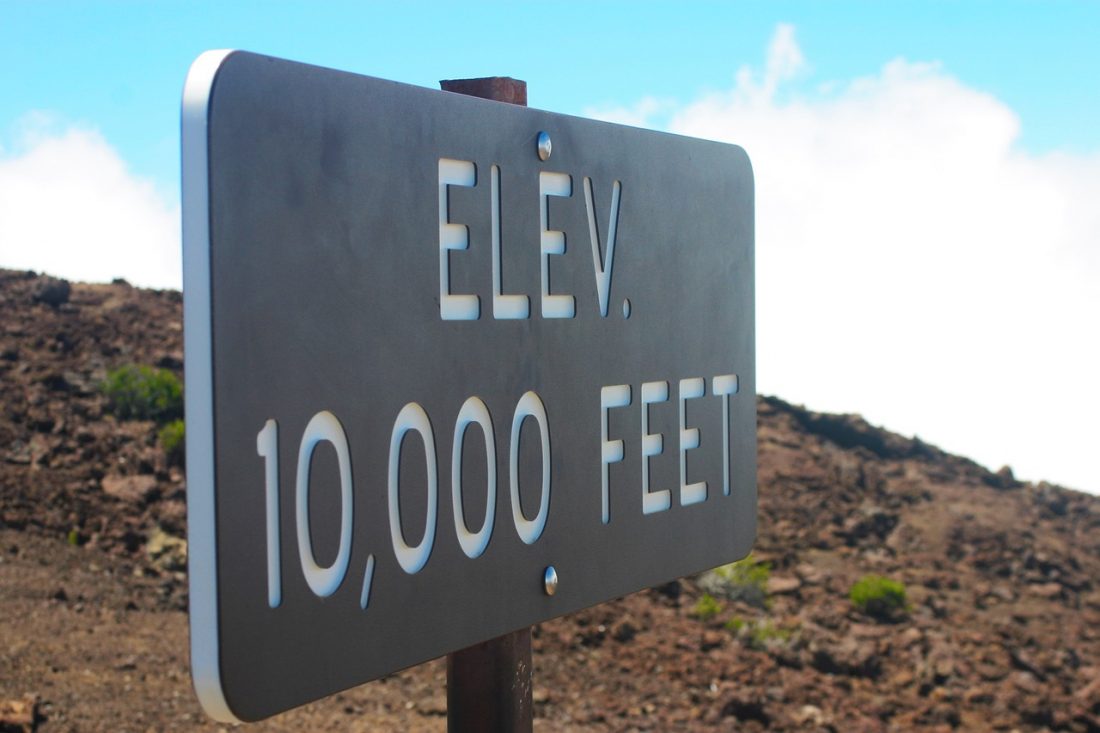B2B Monday Myth: I Don’t Need a Social Media Editorial Calendar
by MGB2B
 The Myth: I don’t need a social media editorial calendar.
The Myth: I don’t need a social media editorial calendar.
The Truth: A social media editorial calendar can help your brand get ahead, and stay ahead, of the online chatter.
The continuing rise of social media for B2B brands means that the online platforms are not only here to stay, but they’re now some of the most dominant tools marketers have in their arsenal. Despite being a valuable asset, social media can also prove to be one of the most difficult tools to effectively manage. Due to this, utilizing a B2B social media editorial calendar can help marketers plan their content, maintain a steady online presence, and target key audiences. In fact, the use of an editorial calendar has proven to be so helpful that 56% of B2B marketers now say they’re using them.
But, there’s a lot more that goes into planning your brand’s editorial calendar than simply slotting posts in at miscellaneous days and times. Keep in mind that social media is just that: social. Your calendar should be carefully designed not only to target your audience, but also to engage them.
Here are 3 tips to maximize your B2B social media editorial calendar, and drive engagement:
- Develop and utilize categories for your posts. Building your editorial calendar requires ample research and planning. Make sure that your posts are as varied and diverse as your audience (while keeping true to your brand’s voice). As you develop your calendar, devise specific categories for your posts, such as holidays and campaigns, and decide which types of content you’ll be sharing, like videos and blog posts. Do you want to wish your followers a Happy Pi Day? Do you have tweets for a specific campaign running throughout the month of February? Do you share your blog posts to LinkedIn on Wednesdays? Managing these types of content helps to diversify your social media presence, and your audience will be thankful for it.
- Find out when your audience is online. One of the key features of your B2B social media editorial calendar is timing. You’ve developed a strategy and created content, but when do you post it all? Conduct some research on your audience. Are key market segments online most during their lunch break, or right after dinner? Do they interact more with content on weekdays as opposed to the weekend? Experiment with a variety of posting times, assess resulting engagement, and schedule accordingly.
- Be consistent, but tweak for each channel. The most important part of social media presence is maintaining your brand’s voice. This being said, you can still create a uniform narrative for your brand while tweaking your content for each channel. Moreover, some platforms are more prevalent among certain audience than others. Finding ways to craft your message to fit the channel and its audience can help target those demographics more effectively. For example, try scheduling an open-ended post on LinkedIn to spark discussion, but a tweet directing users to your website on Twitter.
The constantly active and ever-changing world of social media means that planning is becoming more and more vital for marketers. With news and updates continually rolling across your timeline, it’s important to develop a calendar and stick to it. Having a plan in place is a surefire way to prevent poor performance, and also allows you to focus on the here and now. Need help getting your B2B social media editorial calendar started? Drop us a line.
Continue ReadingWhy Are My Social Media Bounce Rates So High?
by MGB2B
 Google Analytics is one of the most powerful tools in your social media arsenal. The data you gather from it can tell you what types of content your audience prefers and how they’re most likely to find it. You may discover that the content that drives the most visits to your website from search might not do the same from social. You also might realize that while visitors are landing on your white papers page (for example) from your social platforms, they are immediately leaving, or “bouncing.” So what is causing your high bounce rates from social media and how can you lower them?
Google Analytics is one of the most powerful tools in your social media arsenal. The data you gather from it can tell you what types of content your audience prefers and how they’re most likely to find it. You may discover that the content that drives the most visits to your website from search might not do the same from social. You also might realize that while visitors are landing on your white papers page (for example) from your social platforms, they are immediately leaving, or “bouncing.” So what is causing your high bounce rates from social media and how can you lower them?
First, what is a bounce rate, as it pertains to web traffic? A bounce rate, as defined by Google, is “the percentage of sessions in which the person left your site from the entrance page without interacting with the page.” While Google uses the term “sessions,” I am going to continue referring to these as visits. Both sessions and visits refer to the number of users who landed on your page, not specifying unique or repeat traffic.
Your website has an overall bounce rate, which, if things are going well, is probably somewhere between 40% to 55%. Naturally, people are going to land on your page looking for something else or will need to leave it for one reason or another. But as a rule of thumb, at least half of the visitors to your site should take some sort of action, whether that’s clicking to another page, filling out a form, or downloading a piece of content. When your overall website bounce rate creeps up higher than 60% or 70%, you should start looking for issues.
When it comes to high bounce rates from social media, however, 70% or higher is all too common for B2B companies. But why? Consider one of the top pages you send social media users to and ask yourself a few questions:
Is the content that my social media posts are promoting visible? There are few things more frustrating in the digital world than clicking on a link expecting to find ABC, only to find XYZ. It’s a BuzzFeedy strategy than can work to boost website clicks and lower bounce rates, but only if the content that’s being promoted is actually somewhere on the page. For example, you are tweeting about your latest manufacturing white paper, and while it’s at the top of the page you’re sending users to, so are several other white papers that might pique users’ interest. What won’t work to lower your high bounce rates from social media is tweeting about a great new piece of content, only to send users to a totally unrelated page. That will surely prompt a user to leave your site before interacting with it (and possibly not come back).
Is there an obvious call to action on this page? If you are sending users to your most recent blog entry from a social media post, it’s pretty obvious that reading is the action they’re expected to take. But if you are dropping visitors onto a page where your ultimate goal is to collect their contact information, then you need to have a very clear call to action to make that happen. Don’t rely on the social media post the user clicked on, even if it clearly read “fill out the form to download,” to drive the user to action. A user clicking away from the page for a moment, taking a phone call, or not fully reading the tweet could all result in confusion if the page they land on does not feature a clear call to action.
Can users easily navigate to other parts of my site from this page? Perhaps the blog post that you promoted on LinkedIn that drove the user to your site in the first place isn’t quite what they were looking for. They might scroll up looking for a navigation bar so they can explore other parts of your website. But if your blog page doesn’t feature such navigation, they might just throw curiosity to the wind and close the page. A user that could have become a lead is now onto other things.
In all three of these scenarios, a user was driven from a social media post to your website, only to leave it before taking any action. These issues are likely reasons why your bounce rates are sky high. By presenting your content clearly, giving users an obvious call to action, and offering them a way to explore the rest of your site where appropriate, you can drastically lower your high bounce rates from social media.
Your social media channels’ proprietary analytics can also reveal valuable insights into how users interact with your content. Take a look at your top tweets, LinkedIn posts, and other updates by engagement to determine which times of day, phrasing, and platform best drive users to your site. For example, a tweet about your latest white paper shared after working hours may have received plenty of likes, but not many clicks. Try sharing the white paper again, but this time in the morning on LinkedIn, and see how it performs.
Like much of what you do online for your B2B company, lowering your high bounce rates from social media takes a certain amount of trial and error. Testing and tweaking your strategy will help you hit the right users at the right time. And making improvements to your website will benefit your bounce rate from social as well as your site’s overall user experience.
Want to learn more about lowering your bounce rates from social media? Drop us a line.
Continue Reading17 Smart B2B Marketing Tips for 2017
by MGB2B
As 2016 draws to a end, it’s nearly time to close the books and open the bubbly. In the spirit of the New Year, we’d like to send you off with 17 (yes 17!) of our best B2B marketing tips for 2017. These 17 tips cover the top tools, strategies, and marketing advice that will help carry you confidently into the new year. So brush up on everything from Marketing Plans to deciding whether or not to hire an SEO Specialist. Then grab a glass, and set your own plans in motion.
17 Smart B2B Marketing Tips for 2017
Marketing Strategy
1. Make sure you have these 3 key ingredients in your 2017 marketing plan to start off a successful year.
Branding
2. Get answers to the burning questions about B2B taglines that you were too afraid to ask.
3. Find your brand’s voice. It’s important to know it like the back of your hand before you start advertising.
Content
4. Find the right mix of B2B lead-generating content.
5. Add some spice to your B2B content while keeping it effective.
6. (Finally) understand the difference between inbound and content marketing.
Social Media
7. Consider a tiered social media strategy for your company’s brands or global locations.
8. Take advantage of free tools for curating social media content.
Email Marketing
9. Fine-tune your email segmentation game, and watch your CTR go up.
10. Try breaking up with unresponsive contacts — the results might surprise you.
11. Kick high email bounce rates to the curb.
Design
12. Use this simple trick to streamline your advertising messages and visuals.
13. Create a snazzy yet cost-effective marketing video for your company.
Media Buying
14. Cultivate relationships with your industry trade publications.
15. Feed your sales funnel with the right creative media mix.
Search
16. Keep these important changes in mind when building your 2017 search campaigns.
17. Consider bringing an SEO specialist on board.
With these tips in hand, you can march your brand confidently into 2017. Now, go open up a bottle of champagne, and say cheers to another year in the books! We hope 2017 finds you healthy, happy, and successful. Happy New Year!
Continue Reading